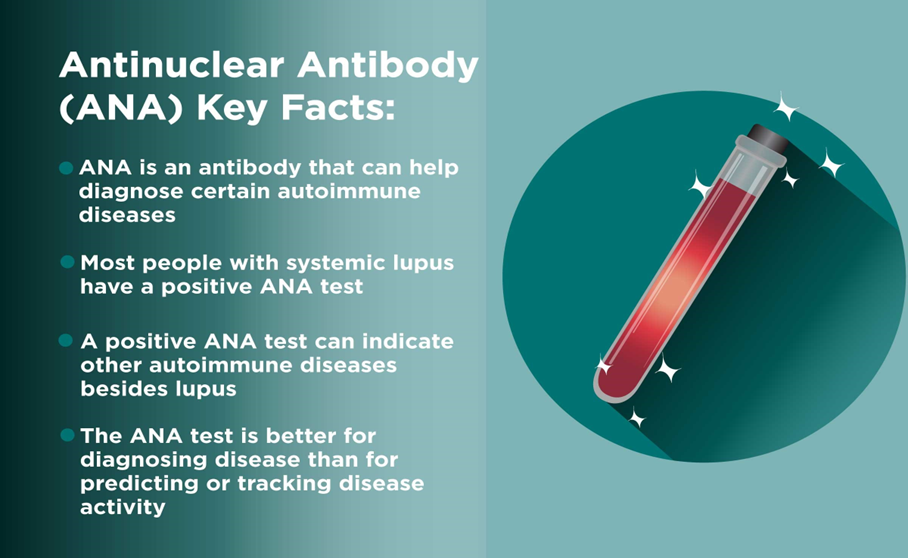A nurse is caring for a patient who has rheumatoid arthritis. Which of the following laboratory tests are used to diagnose the disease? (Select all that apply)
Antinuclear antibody (ANA) titer
BUN
Urinalysis
Erythrocyte sedimentation rate (ESR)
White blood cell count
Correct Answer : A,D,E
Choice A rationale:
Antinuclear antibody (ANA) titer is a blood test that detects the presence of antinuclear antibodies, which are autoantibodies that target the body's own tissues. These antibodies are often present in people with autoimmune diseases, including rheumatoid arthritis.
While a positive ANA test does not definitively diagnose rheumatoid arthritis, it can support a diagnosis when considered alongside other clinical findings and laboratory tests.

Choice B rationale:
Blood urea nitrogen (BUN) is a blood test that measures the amount of urea nitrogen in the blood. Urea nitrogen is a waste product that is produced when the body breaks down proteins.
BUN levels can be elevated in people with kidney disease, dehydration, or certain other medical conditions. However, BUN is not specifically used to diagnose rheumatoid arthritis.
Choice C rationale:
Urinalysis is a test that examines the urine for various substances, including cells, bacteria, and chemicals.
It can be used to diagnose a variety of conditions, including urinary tract infections, kidney disease, and diabetes. However, urinalysis is not typically used to diagnose rheumatoid arthritis.
Choice D rationale:
Erythrocyte sedimentation rate (ESR) is a blood test that measures how quickly red blood cells settle at the bottom of a test tube.
A high ESR can indicate inflammation in the body.
ESR is often elevated in people with rheumatoid arthritis, as it is a marker of inflammation.
Choice E rationale:
White blood cell count (WBC) is a blood test that measures the number of white blood cells in the blood. White blood cells are part of the immune system and help fight infection.
A high WBC count can indicate an infection or inflammation.
WBC count can be elevated in people with rheumatoid arthritis, as it is a marker of inflammation.
Nursing Test Bank
Naxlex Comprehensive Predictor Exams
Related Questions
Correct Answer is C
Explanation
Choice A rationale:
Hypothermia, or abnormally low body temperature, is not typically a symptom of diarrhea. While it’s possible for a person with severe diarrhea to experience chills or feel cold, hypothermia is not a direct result of diarrhea.
Choice B rationale:
A rigid abdomen is often a sign of a serious condition like peritonitis (inflammation of the peritoneum, the tissue that lines the inner wall of the abdomen), but it is not typically associated with diarrhea.
Choice C rationale:
Dehydration is a common complication of diarrhea. When a person has diarrhea, they can lose a lot of fluid and electrolytes quickly, leading to dehydration. Symptoms of dehydration can include thirst, less frequent urination, dark-colored urine, fatigue, dizziness, and confusion.
Choice D rationale:
Decreased bowel sounds are not typically associated with diarrhea. In fact, bowel sounds may actually increase in some cases of diarrhea due to increased gut motility.
Correct Answer is B
Explanation
Choice A rationale:
Metabolic alkalosis Metabolic alkalosis is a condition that occurs when your body has too many bases. It can occur due to prolonged vomiting, use of diuretics, or an overuse of antacids. In the context of Chronic Obstructive Pulmonary Disease (COPD), metabolic alkalosis is not typically a direct result of the disease. COPD primarily affects the respiratory system and does not directly cause an imbalance of bases in the body.
Choice B rationale:
Respiratory acidosis Respiratory acidosis is a condition that occurs when the lungs can’t remove enough carbon dioxide (CO2). This leads to a buildup of CO2 in the body, causing the pH of the blood to decrease and become more acidic. This is the most common acid-base imbalance seen in patients with COPD1. COPD can cause an alteration in respiratory exchanges, leading to retention of CO21. The consequence of hypercapnia due to alteration of gas exchange in COPD patients mainly consists in an increase of H+ concentration and development of respiratory acidosis.
Respiratory alkalosis Respiratory alkalosis is a condition that occurs when there is too little carbon dioxide in the body, often due to hyperventilation. In the context of COPD, this is less likely because COPD patients often have difficulty expelling carbon dioxide, not an excess of it being expelled.
Choice D rationale:
Metabolic Acidosis Metabolic acidosis occurs when the body produces too much acid, or when the kidneys are not removing enough acid from the body. This can occur due to conditions such as kidney disease, lactic acidosis, or ketoacidosis. While COPD can have wide-ranging effects on the body, it does not typically cause metabolic acidosis directly.
Whether you are a student looking to ace your exams or a practicing nurse seeking to enhance your expertise , our nursing education contents will empower you with the confidence and competence to make a difference in the lives of patients and become a respected leader in the healthcare field.
Visit Naxlex, invest in your future and unlock endless possibilities with our unparalleled nursing education contents today
Report Wrong Answer on the Current Question
Do you disagree with the answer? If yes, what is your expected answer? Explain.
Kindly be descriptive with the issue you are facing.
